1. Mesulam MM. Primary progressive aphasia. Ann Neurol. 2001; 49:425–432. PMID:
11310619.

2. Gorno-Tempini ML, Hillis AE, Weintraub S, Kertesz A, Mendez M, Cappa SF, et al. Classification of primary progressive aphasia and its variants. Neurology. 2011; 76:1006–1014. PMID:
21325651.

3. Goedert M, Spillantini MG, Jakes R, Rutherford D, Crowther RA. Multiple isoforms of human microtubule-associated protein tau: sequences and localization in neurofibrillary tangles of Alzheimer's disease. Neuron. 1989; 3:519–526. PMID:
2484340.

4. Josephs KA, Hodges JR, Snowden JS, Mackenzie IR, Neumann M, Mann DM, et al. Neuropathological background of phenotypical variability in frontotemporal dementia. Acta Neuropathol. 2011; 122:137–153. PMID:
21614463.

5. Spinelli EG, Mandelli ML, Miller ZA, Santos-Santos MA, Wilson SM, Agosta F, et al. Typical and atypical pathology in primary progressive aphasia variants. Ann Neurol. 2017; 81:430–443. PMID:
28133816.

6. Grossman M. Primary progressive aphasia: clinicopathological correlations. Nat Rev Neurol. 2010; 6:88–97. PMID:
20139998.

7. Harada R, Okamura N, Furumoto S, Furukawa K, Ishiki A, Tomita N, et al.
18F-THK5351: a novel PET radiotracer for imaging neurofibrillary pathology in Alzheimer disease. J Nucl Med. 2016; 57:208–214. PMID:
26541774.
8. Ng KP, Pascoal TA, Mathotaarachchi S, Therriault J, Kang MS, Shin M, et al. Monoamine oxidase B inhibitor, selegiline, reduces
18F-THK5351 uptake in the human brain. Alzheimers Res Ther. 2017; 9:25. PMID:
28359327.

9. Yoon CW, Jeong HJ, Seo S, Lee SY, Suh MK, Heo JH, et al.
18F-THK5351 PET imaging in nonfluent-agrammatic variant primary progressive aphasia. Dement Neurocogn Disord. 2018; 17:110–119. PMID:
30906400.
10. Lee H, Seo S, Lee SY, Jeong HJ, Woo SH, Lee KM, et al. [
18F]-THK5351 PET imaging in patients with semantic variant primary progressive aphasia. Alzheimer Dis Assoc Disord. 2018; 32:62–69. PMID:
29028649.
11. Kim H, Na DL. Normative data on the Korean version of the Western Aphasia Battery. J Clin Exp Neuropsychol. 2004; 26:1011–1020. PMID:
15590457.

12. Kang Y, Jahng S, Na DL. Seoul Neuropsychological Screening Battery (SNSB-II). 2nd ed. Seoul: Human Brain Research & Consulting Co.;2012.
13. Kang JM, Lee SY, Seo S, Jeong HJ, Woo SH, Lee H, et al. Tau positron emission tomography using [
18F]THK5351 and cerebral glucose hypometabolism in Alzheimer's disease. Neurobiol Aging. 2017; 59:210–219. PMID:
28890300.
14. Okamura N, Furumoto S, Fodero-Tavoletti MT, Mulligan RS, Harada R, Yates P, et al. Non-invasive assessment of Alzheimer's disease neurofibrillary pathology using
18F-THK5105 PET. Brain. 2014; 137:1762–1771. PMID:
24681664.
15. Lockhart SN, Baker SL, Okamura N, Furukawa K, Ishiki A, Furumoto S, et al. Dynamic PET measures of tau accumulation in cognitively normal older adults and Alzheimer's disease patients measured using [18F] THK-5351. PLoS One. 2016; 11:e0158460. PMID:
27355840.

16. Thurfjell L, Lilja J, Lundqvist R, Buckley C, Smith A, Vandenberghe R. Automated quantification of
18F-flutemetamol PET activity for categorizing scans as negative or positive for brain amyloid:concordance with visual image reads. J Nucl Med. 2014; 55:1623–1628. PMID:
25146124.
17. Greve DN, Salat DH, Bowen SL, Izquierdo-Garcia D, Schultz AP, Catana C, et al. Different partial volume correction methods lead to different conclusions: an
18F-FDG-PET study of aging. Neuroimage. 2016; 132:334–343. PMID:
26915497.
18. Greve DN, Svarer C, Fisher PM, Feng L, Hansen AE, Baare W, et al. Cortical surface-based analysis reduces bias and variance in kinetic modeling of brain PET data. Neuroimage. 2014; 92:225–236. PMID:
24361666.

19. Cho H, Kim HJ, Choi JY, Ryu YH, Lee MS, Na DL, et al.
18F-flortaucipir uptake patterns in clinical subtypes of primary progressive aphasia. Neurobiol Aging. 2019; 75:187–197. PMID:
30594046.
20. Josephs KA, Martin PR, Botha H, Schwarz CG, Duffy JR, Clark HM, et al. [
18F]AV-1451 tau-PET and primary progressive aphasia. Ann Neurol. 2018; 83:599–611. PMID:
29451323.
21. Kobayashi R, Hayashi H, Kawakatsu S, Ishiki A, Okamura N, Arai H, et al. [
18F]THK-5351 PET imaging in early-stage semantic variant primary progressive aphasia: a report of two cases and a literature review. BMC Neurol. 2018; 18:109. PMID:
30089453.

22. Itabashi R, Nishio Y, Kataoka Y, Yazawa Y, Furui E, Matsuda M, et al. Damage to the left precentral gyrus is associated with apraxia of speech in acute stroke. Stroke. 2016; 47:31–36. PMID:
26645260.

23. Rohrer JD, Rossor MN, Warren JD. Apraxia in progressive nonfluent aphasia. J Neurol. 2010; 257:569–574. PMID:
19908082.

24. Dronkers NF, Wilkins DP, Van Valin RD Jr, Redfern BB, Jaeger JJ. Lesion analysis of the brain areas involved in language comprehension. Cognition. 2004; 92:145–177. PMID:
15037129.

25. Holland R, Lambon Ralph MA. The anterior temporal lobe semantic hub is a part of the language neural network: selective disruption of irregular past tense verbs by rTMS. Cereb Cortex. 2010; 20:2771–2775. PMID:
20223808.

26. Fridriksson J, Kjartansson O, Morgan PS, Hjaltason H, Magnusdottir S, Bonilha L, et al. Impaired speech repetition and left parietal lobe damage. J Neurosci. 2010; 30:11057–11061. PMID:
20720112.

27. Hickok G, Poeppel D. The cortical organization of speech processing. Nat Rev Neurosci. 2007; 8:393–402. PMID:
17431404.

28. Migliaccio R, Boutet C, Valabregue R, Ferrieux S, Nogues M, Lehéricy S, et al. The brain network of naming: a lesson from primary progressive aphasia. PLoS One. 2016; 11:e0148707. PMID:
26901052.

29. Harada R, Okamura N, Furumoto S, Furukawa K, Ishiki A, Tomita N, et al. Validation of the binding specificity of tau PET tracer [
18F] THK-5351 on postmortem human brain samples. Alzheimers Dement. 2015; 11:P271.

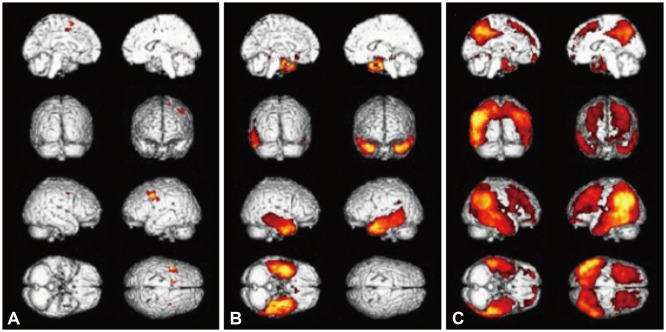
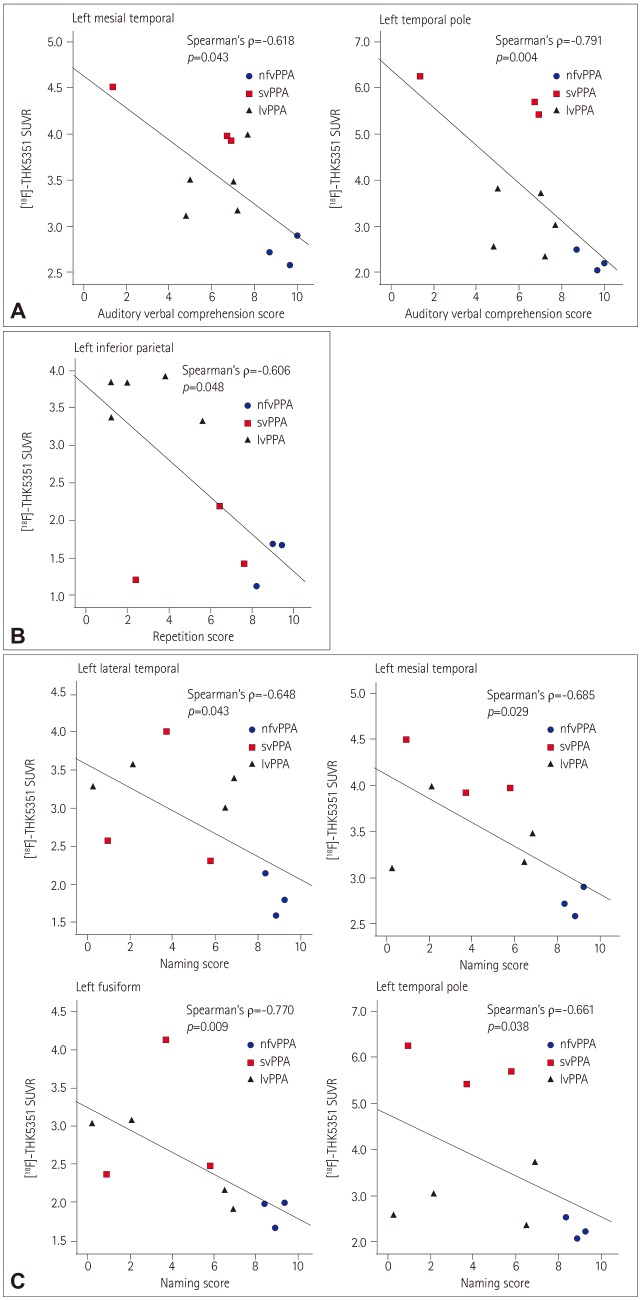




 PDF
PDF ePub
ePub Citation
Citation Print
Print



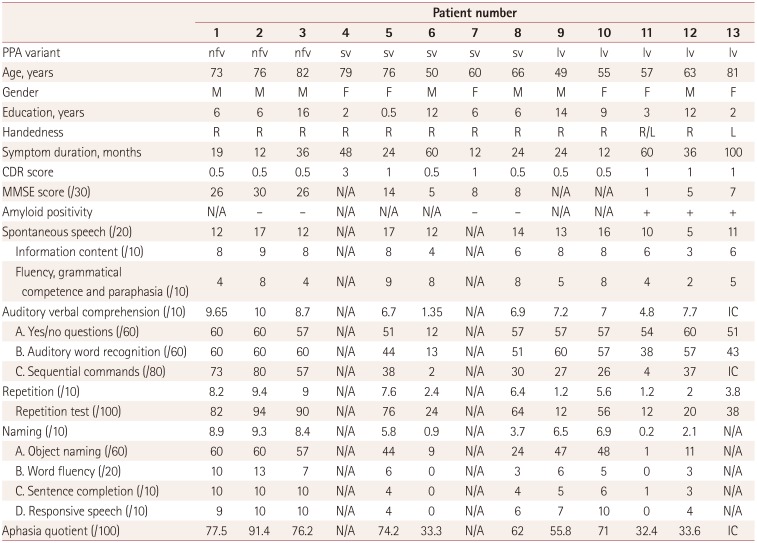
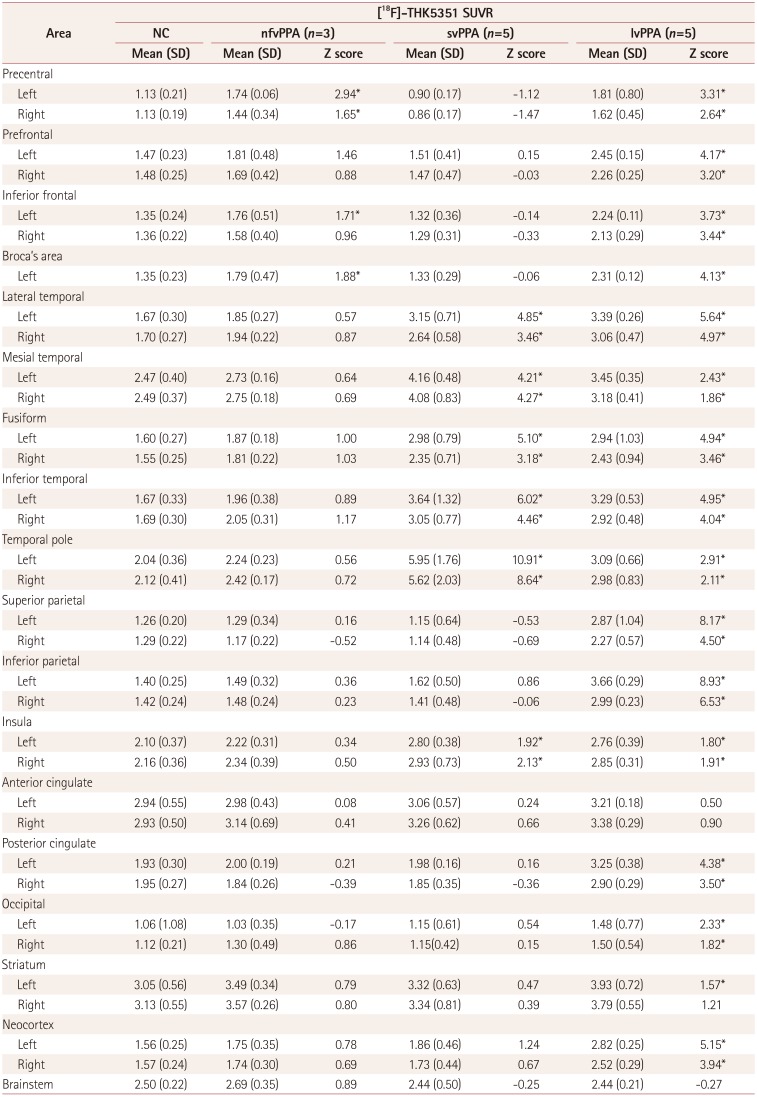
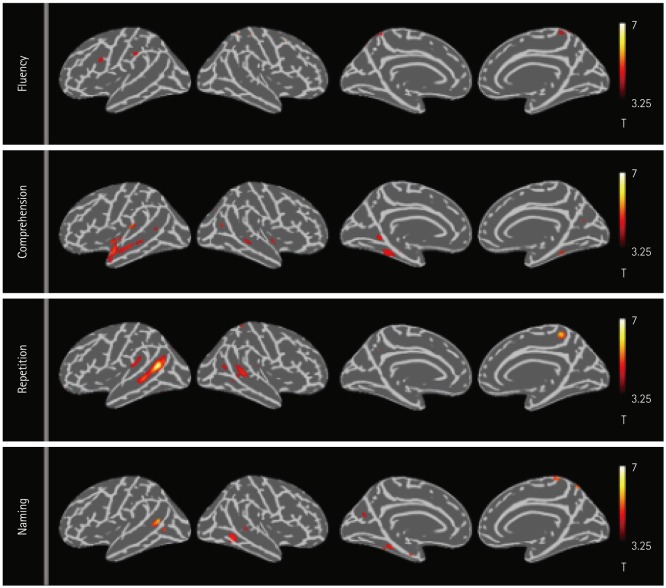
 XML Download
XML Download